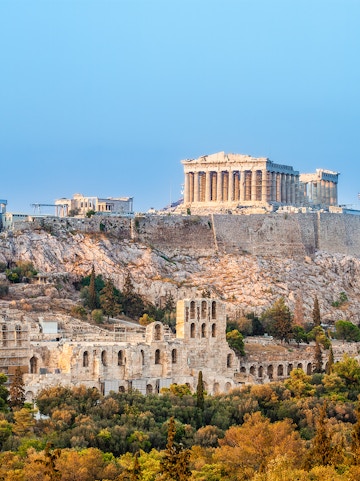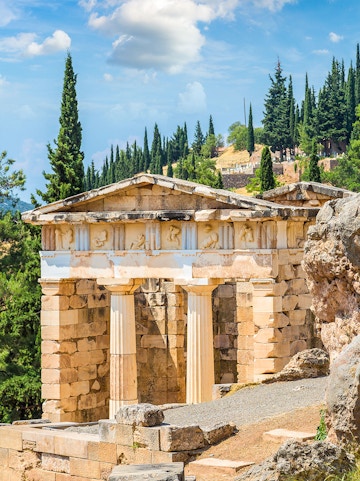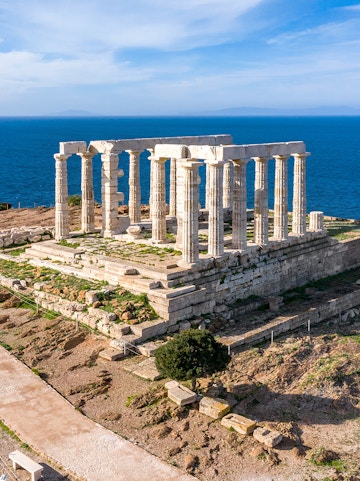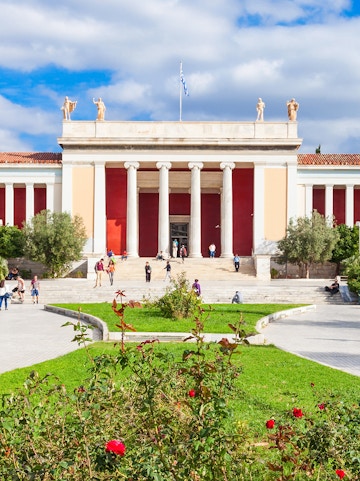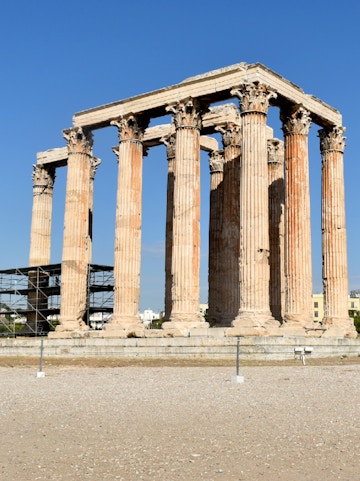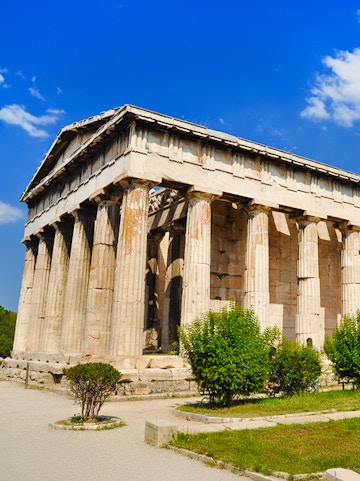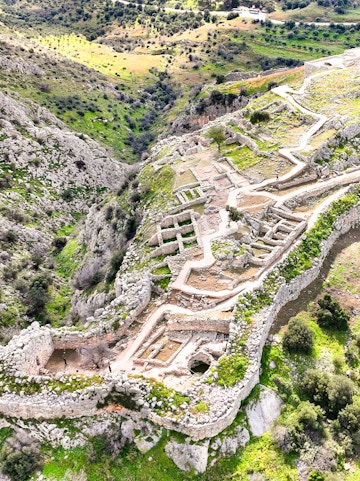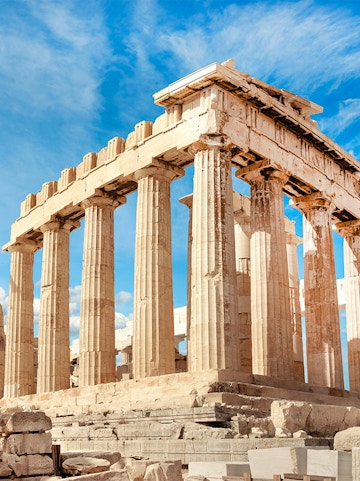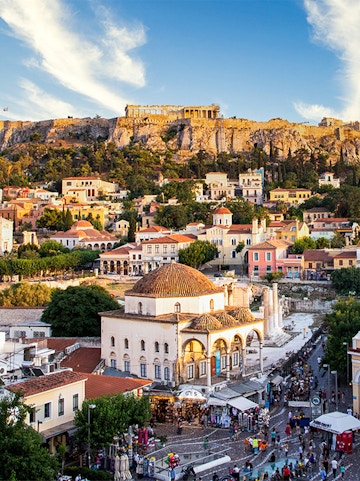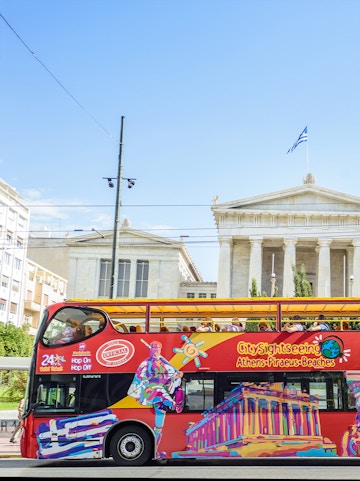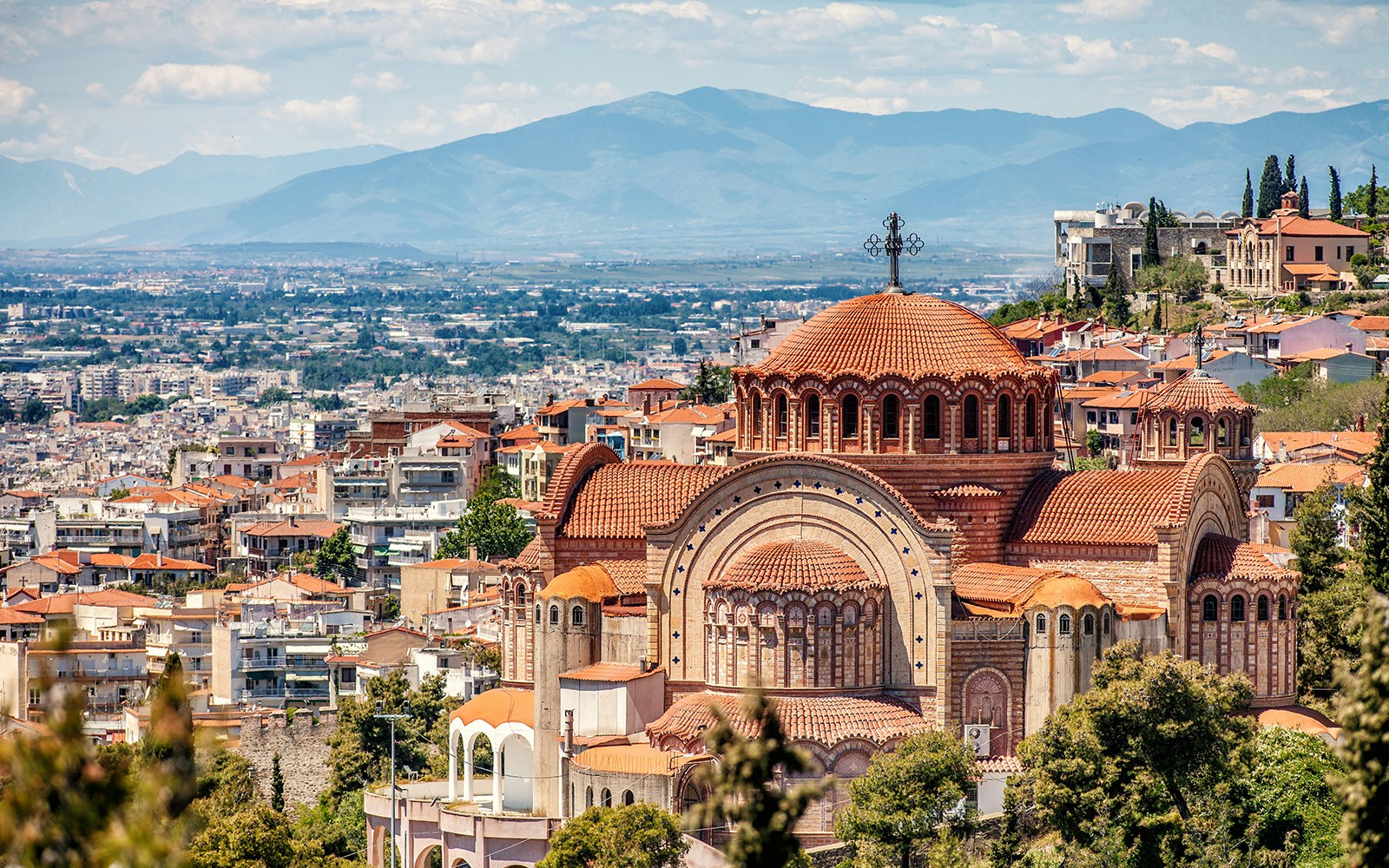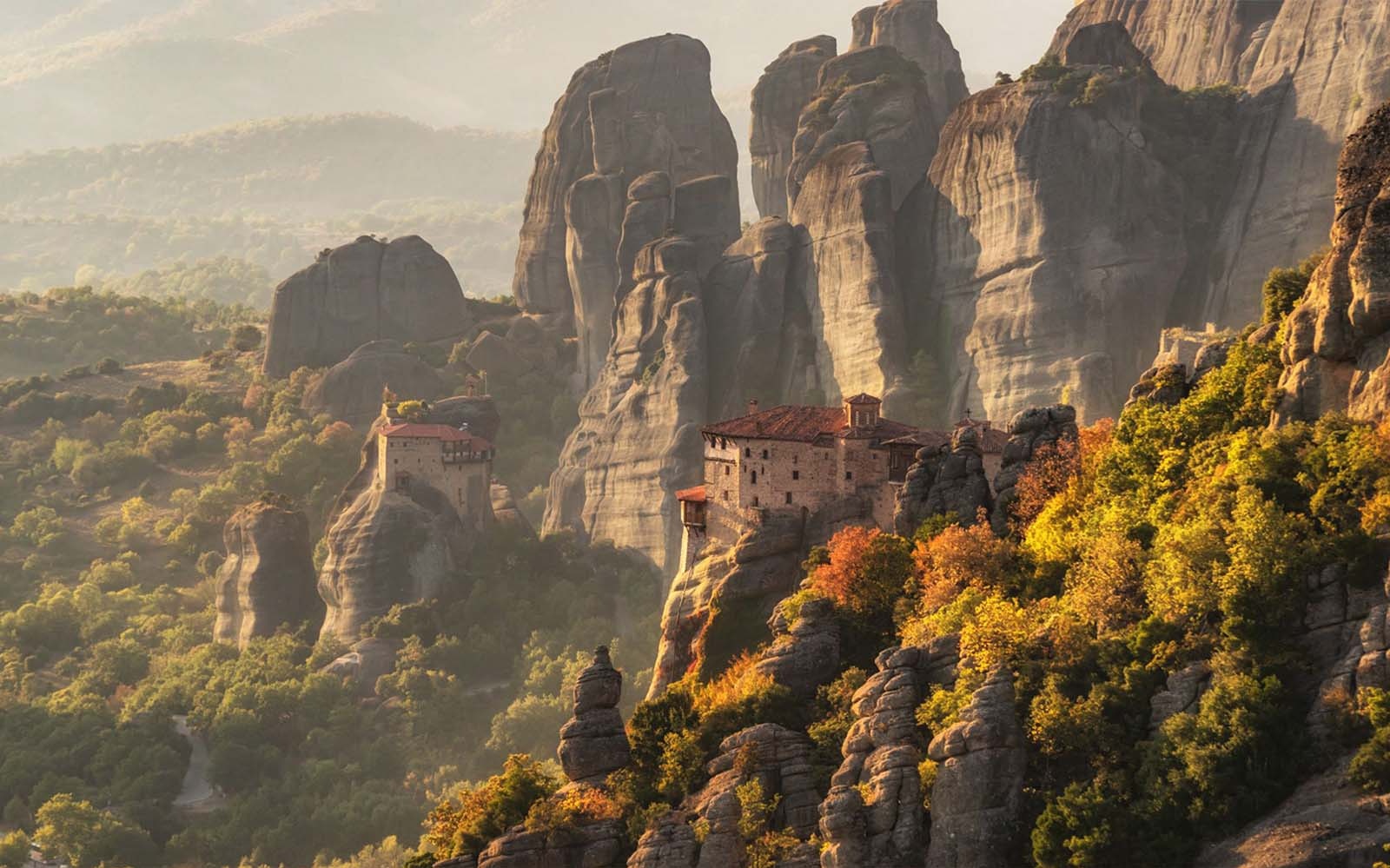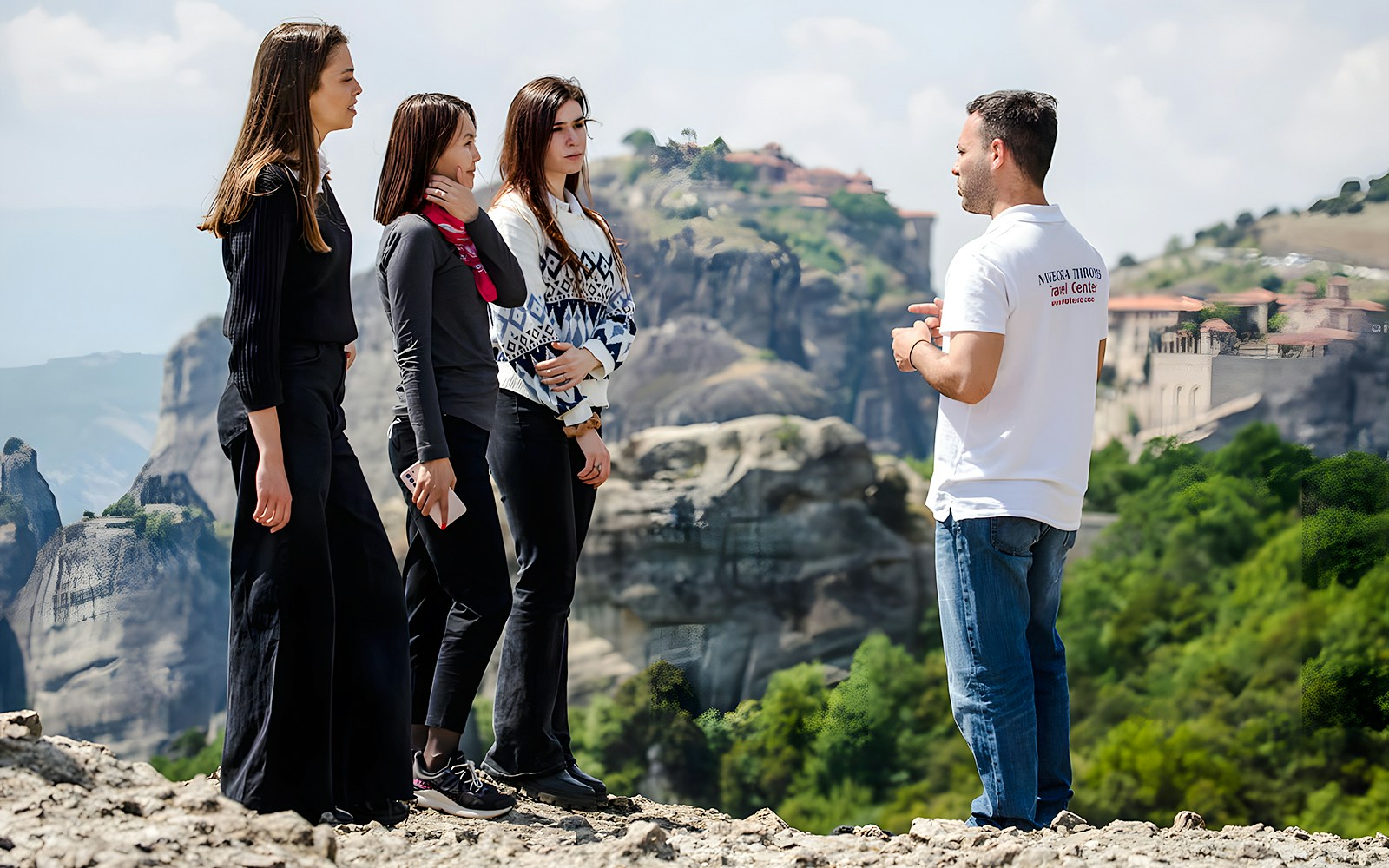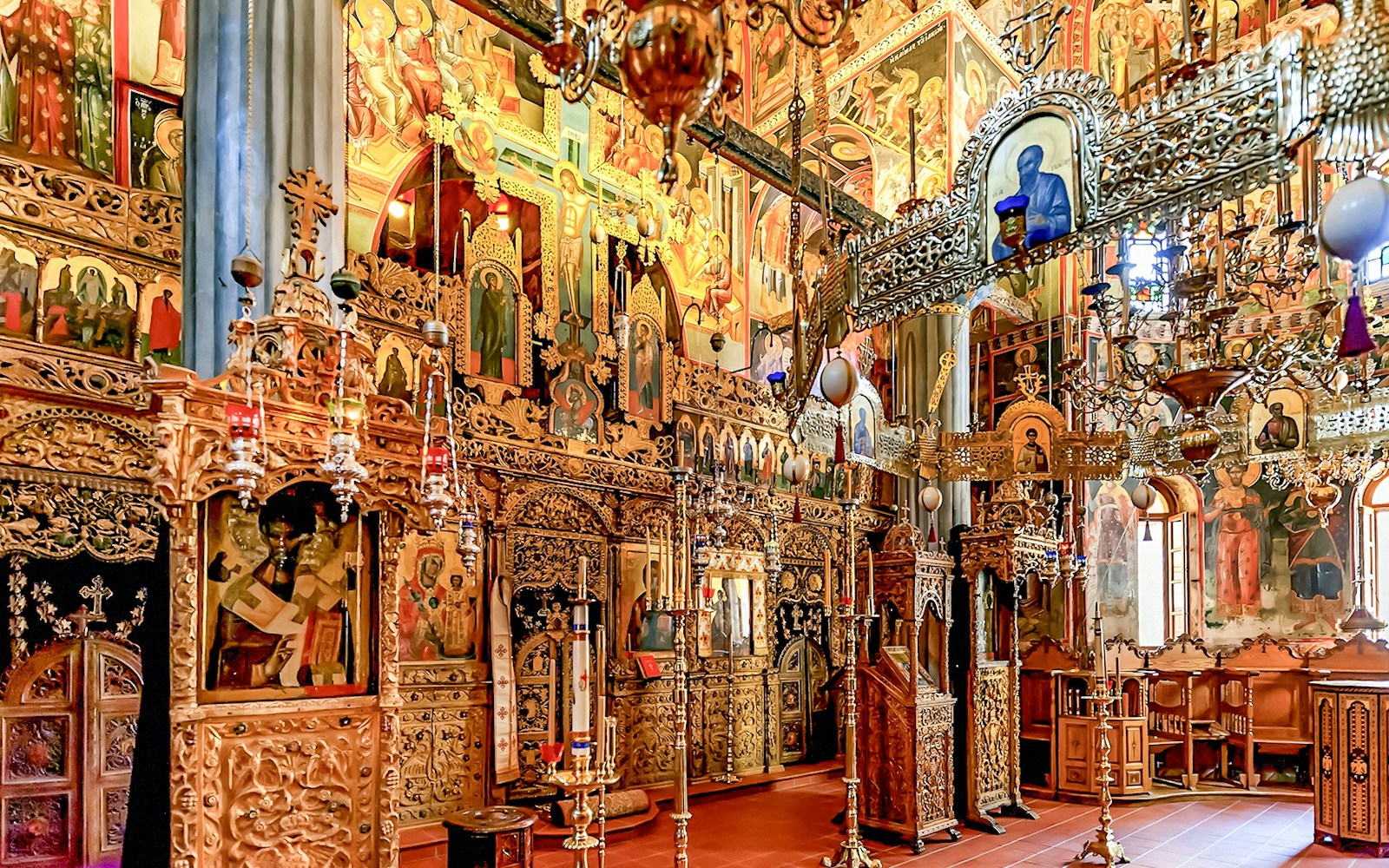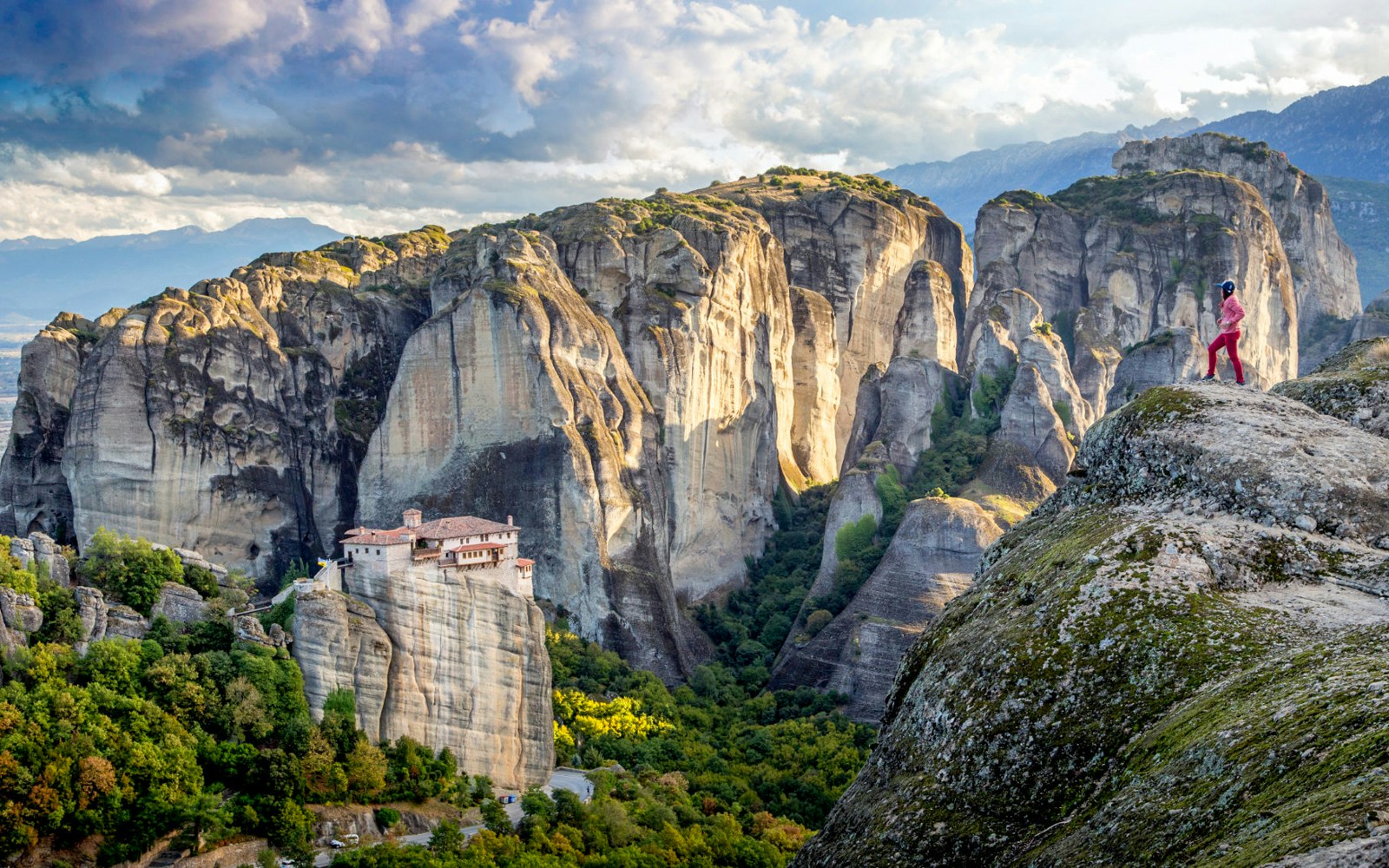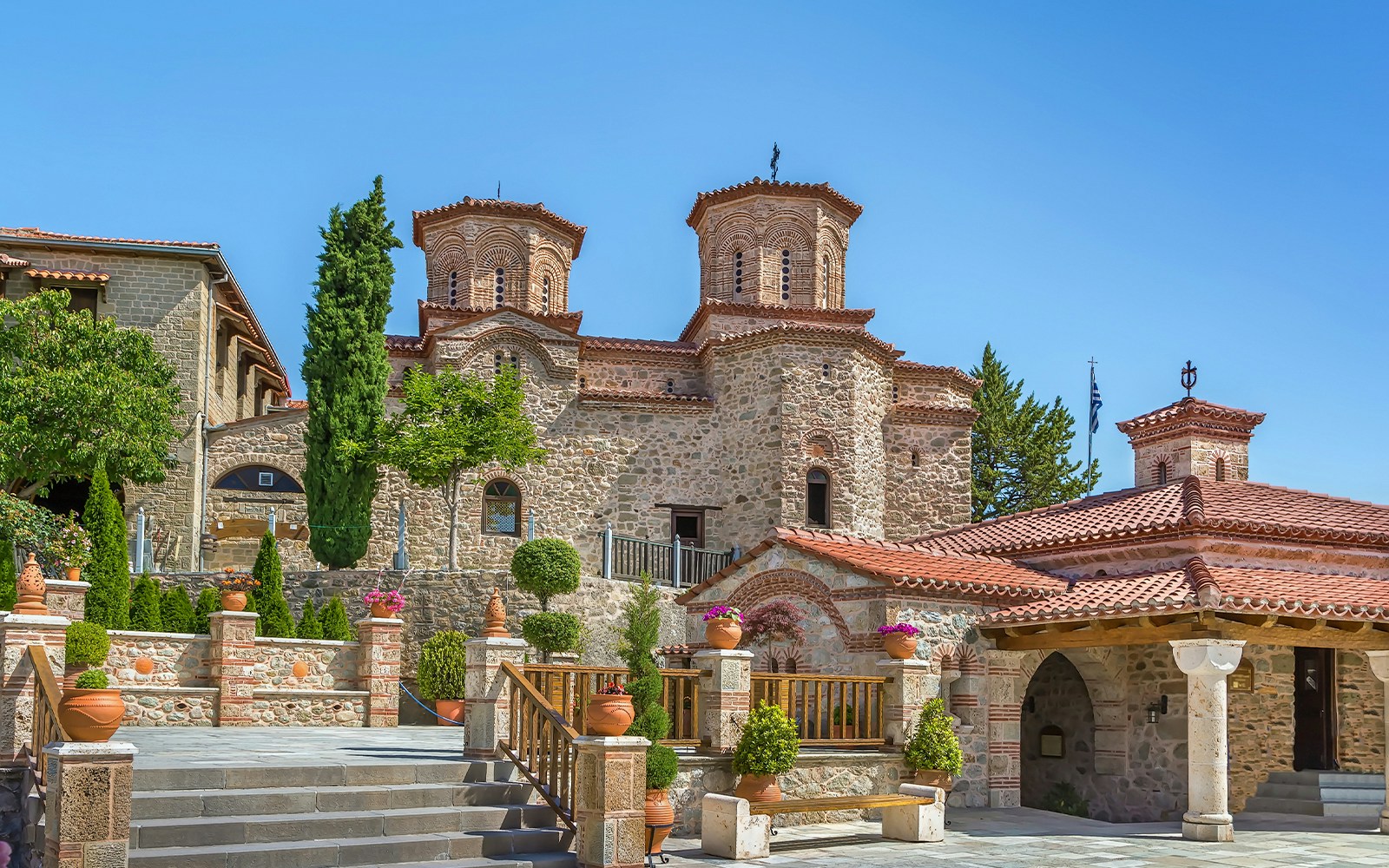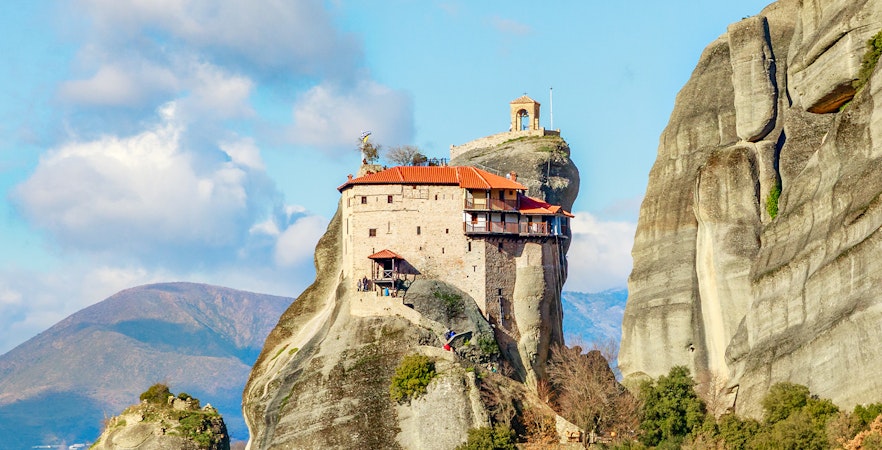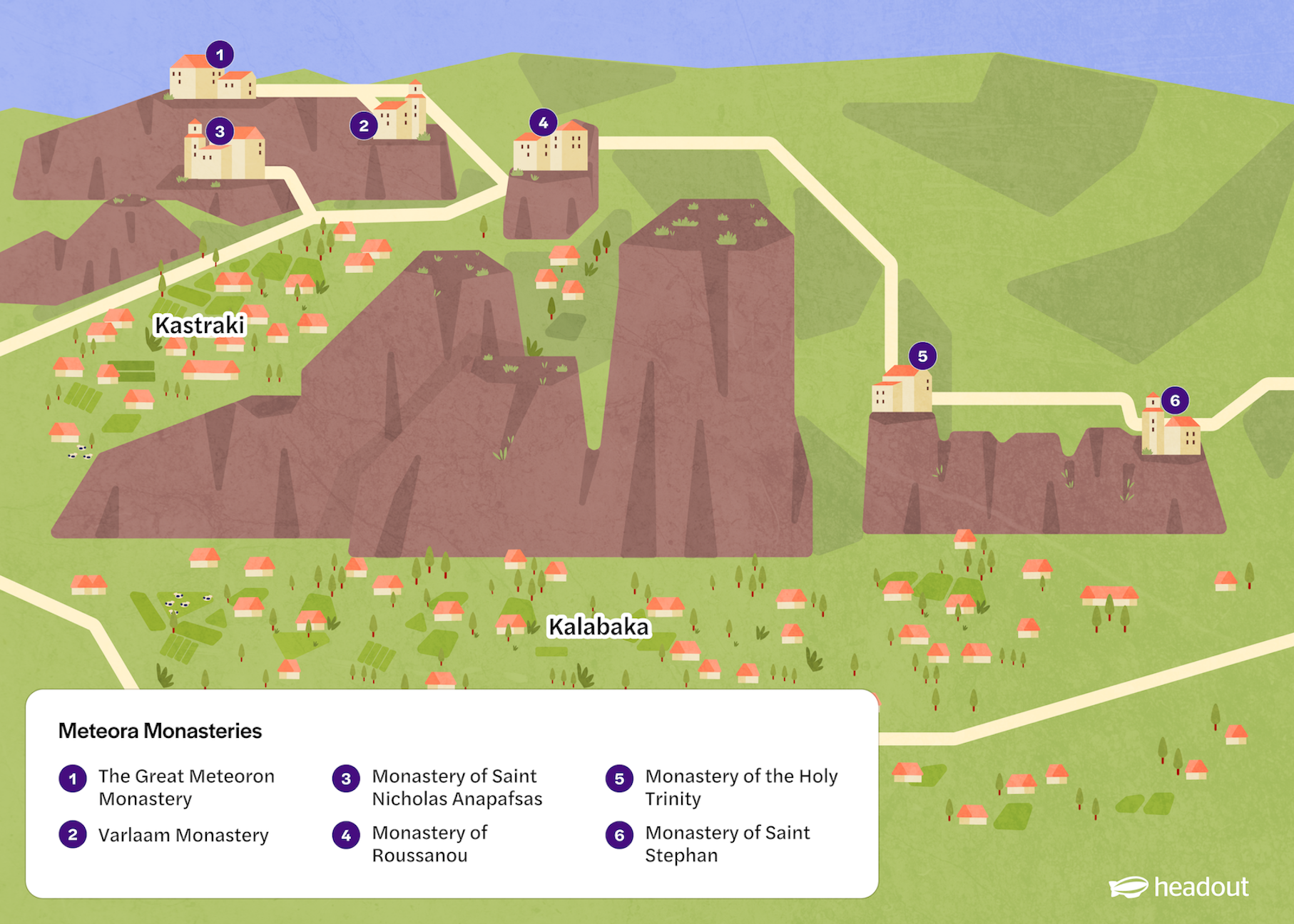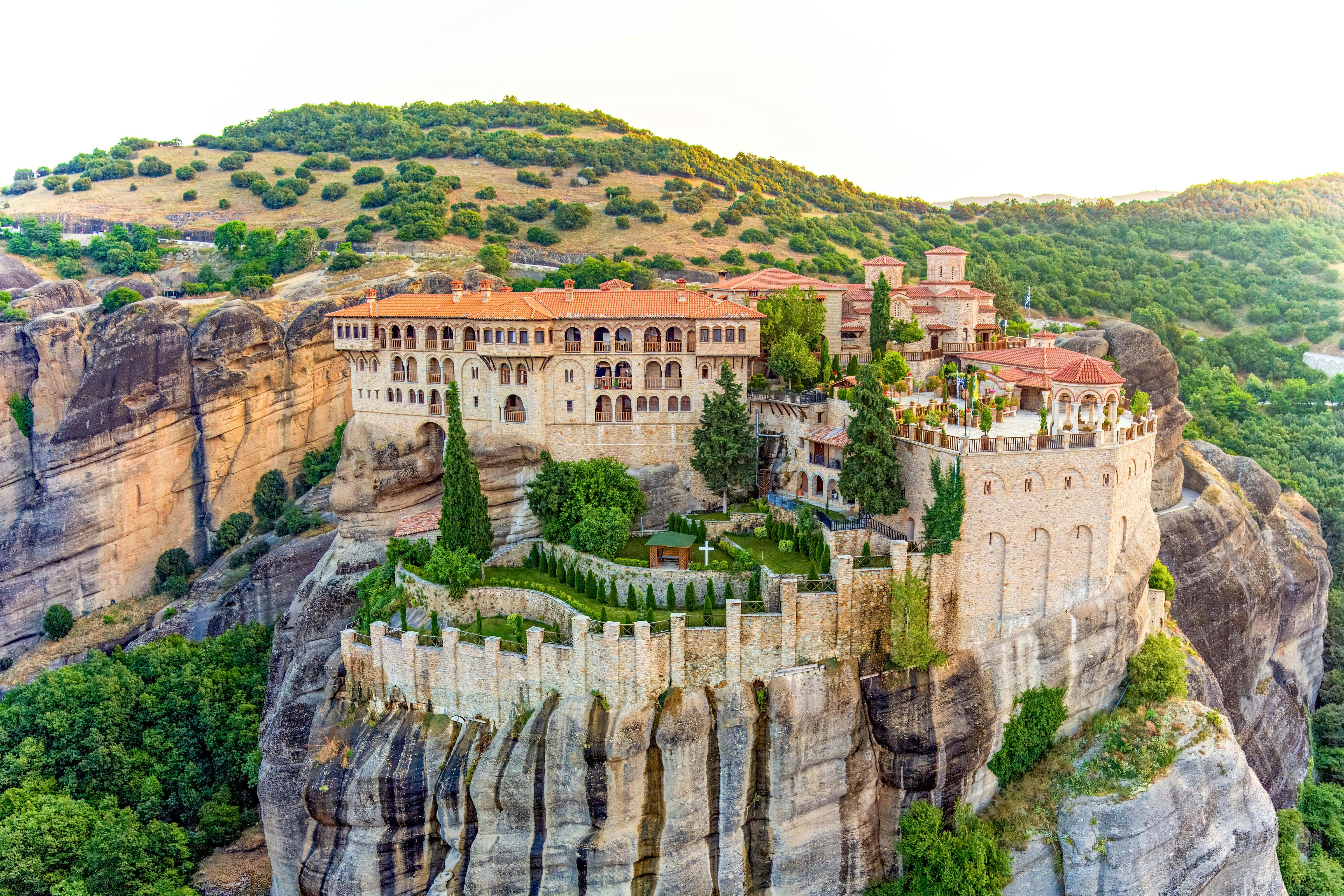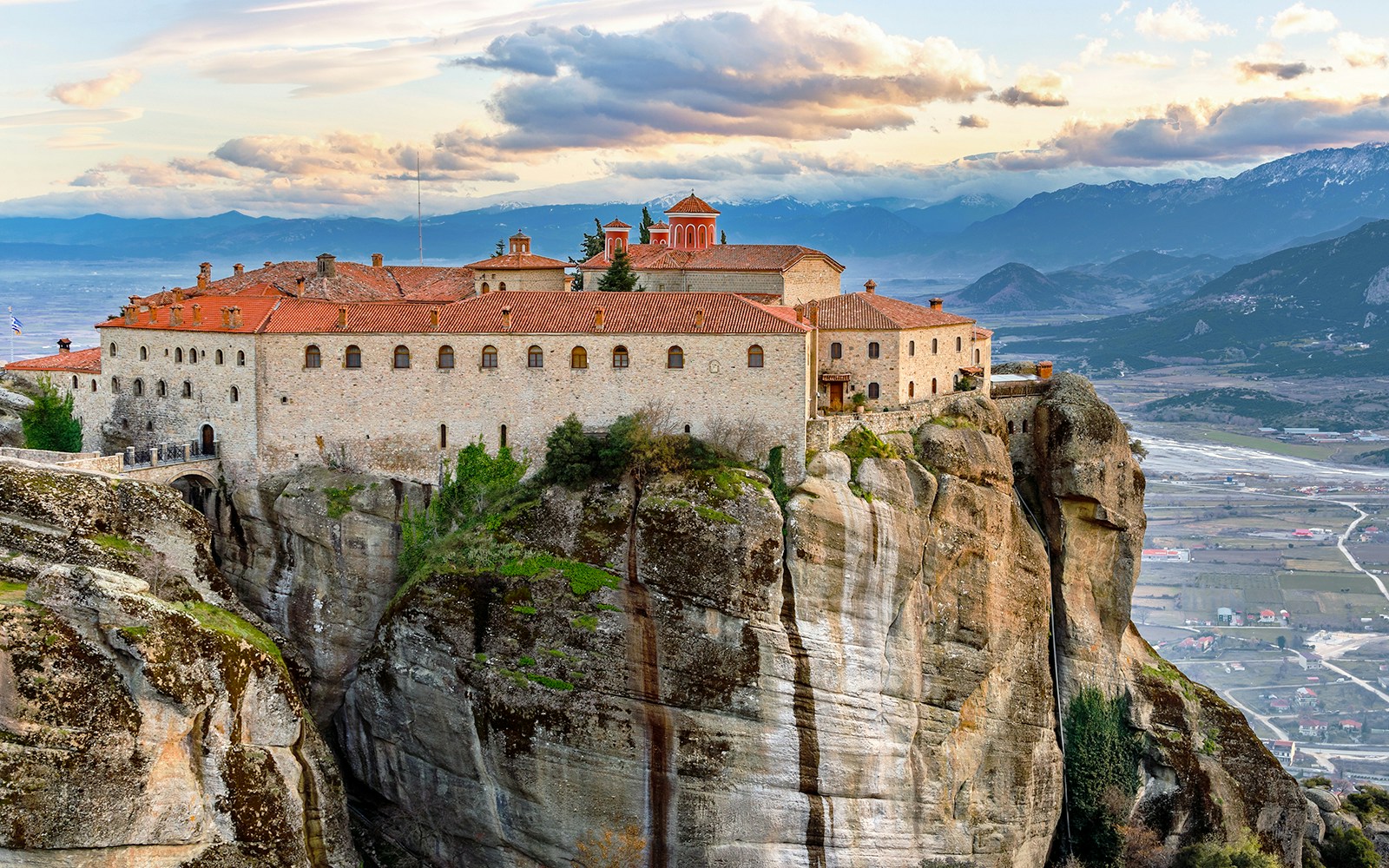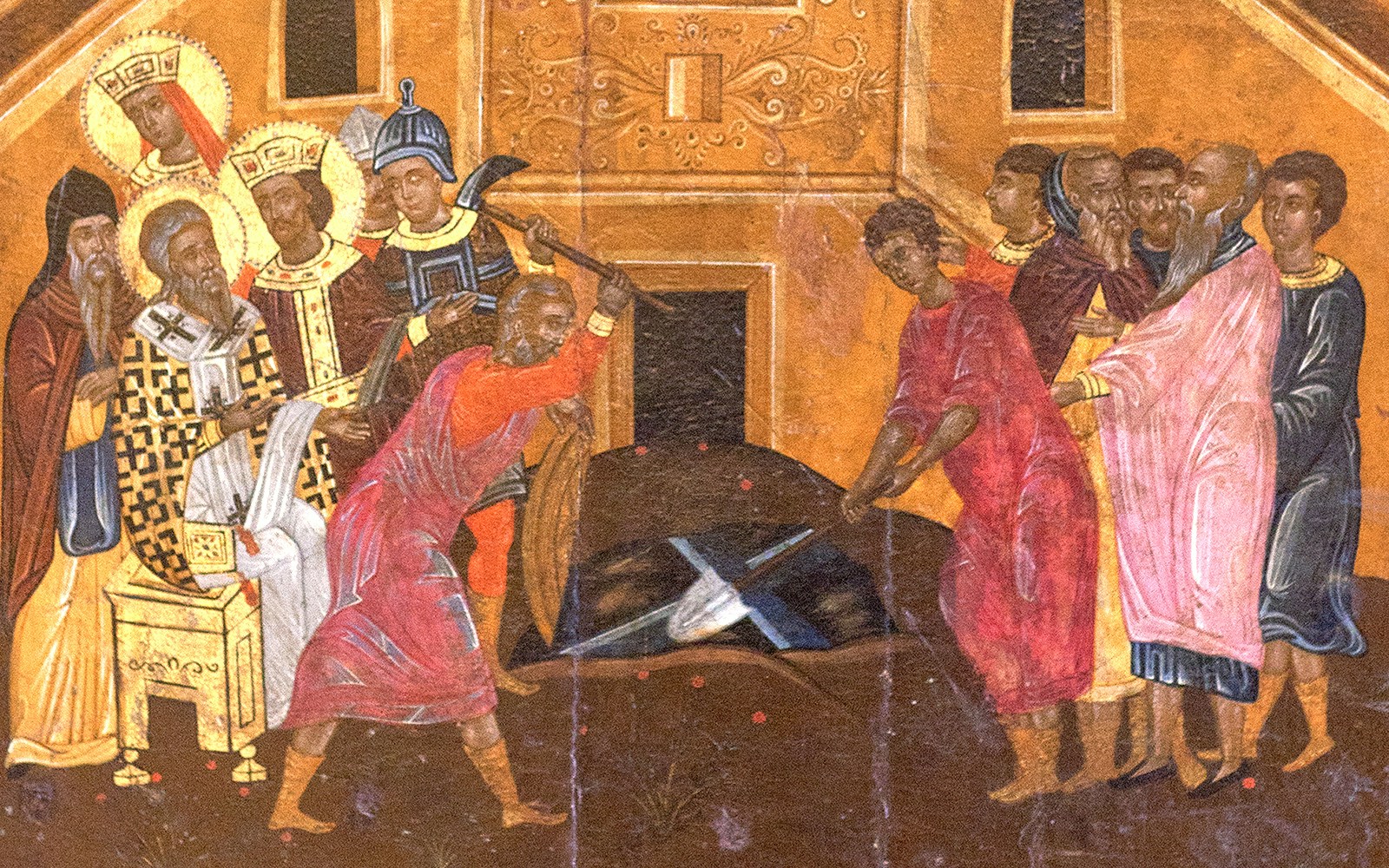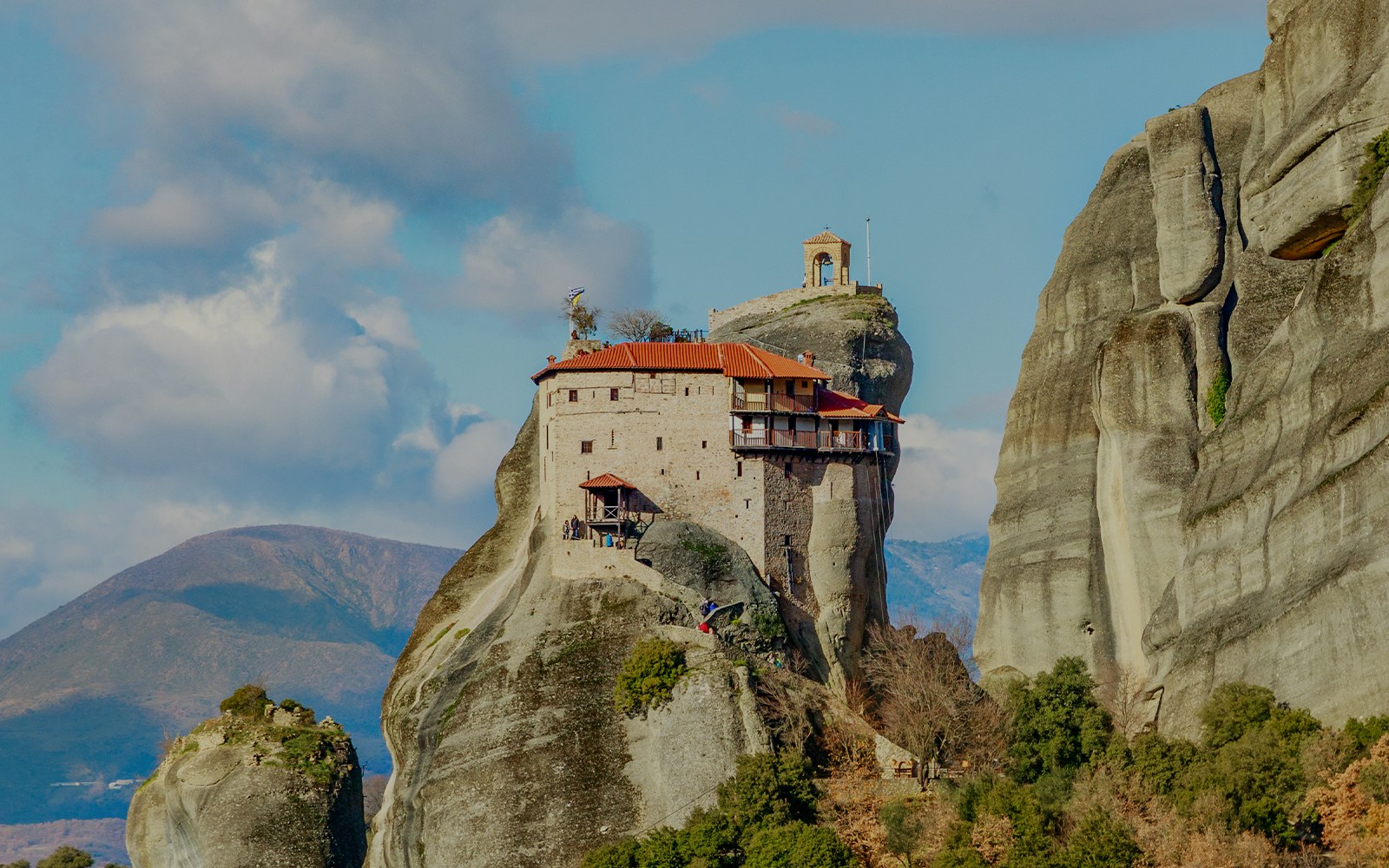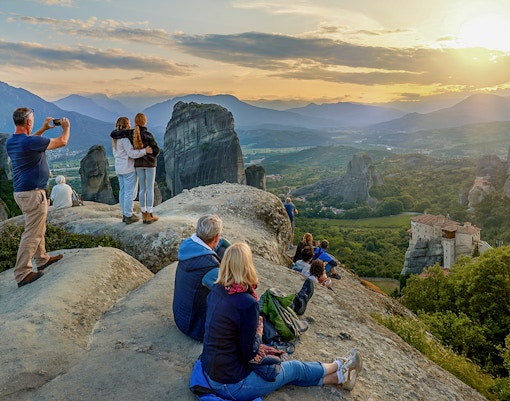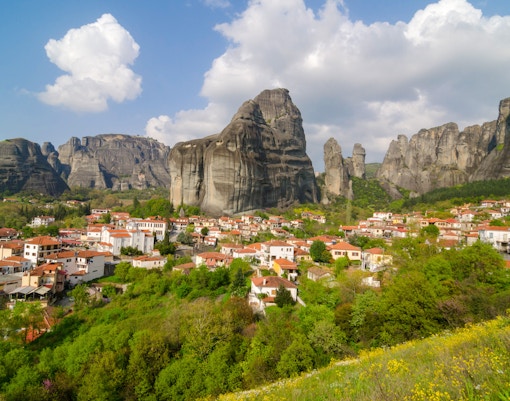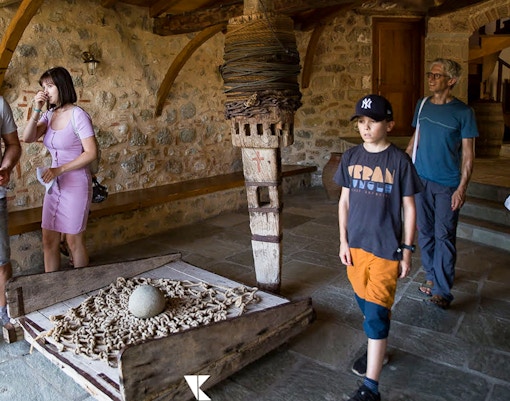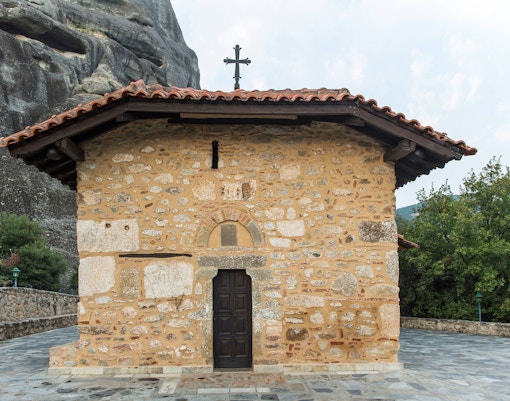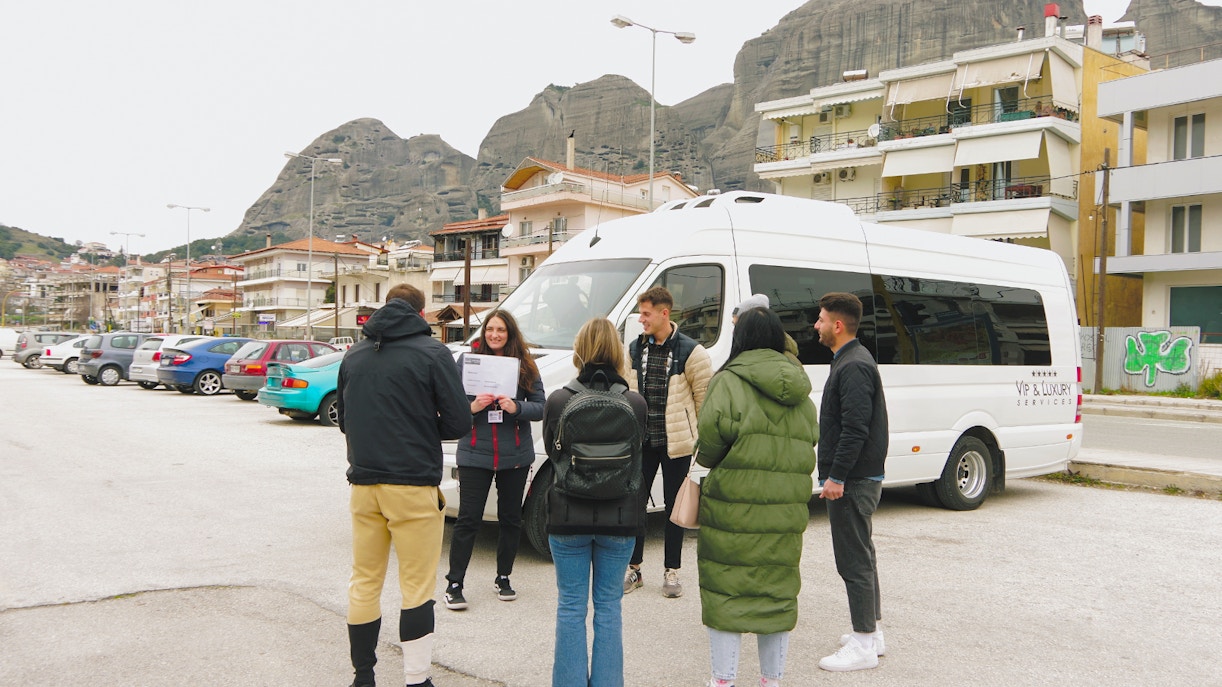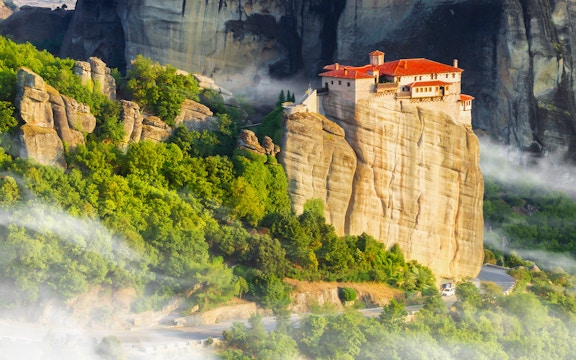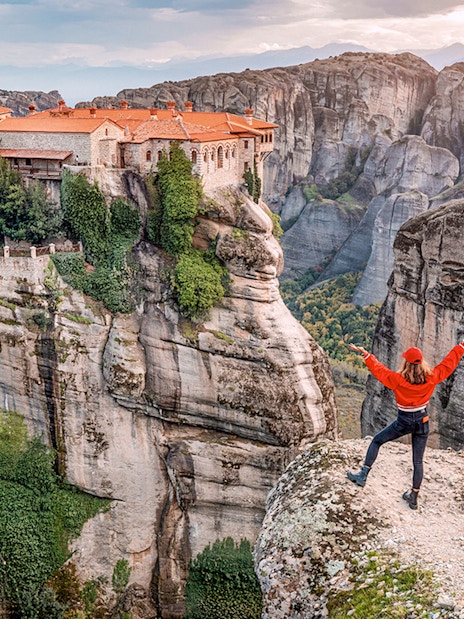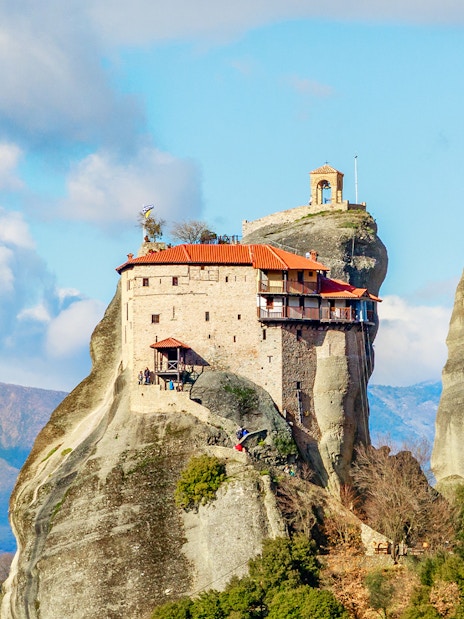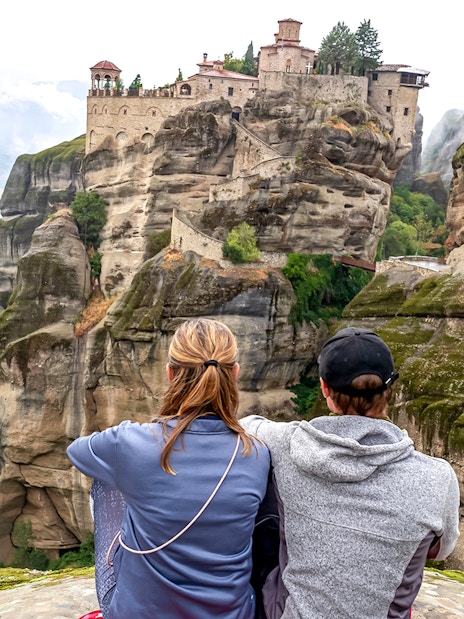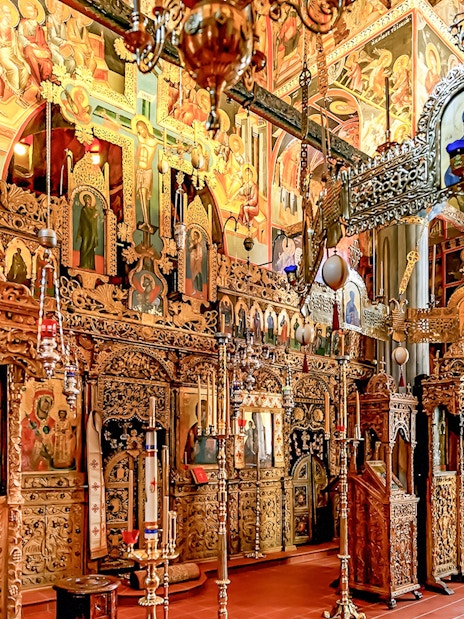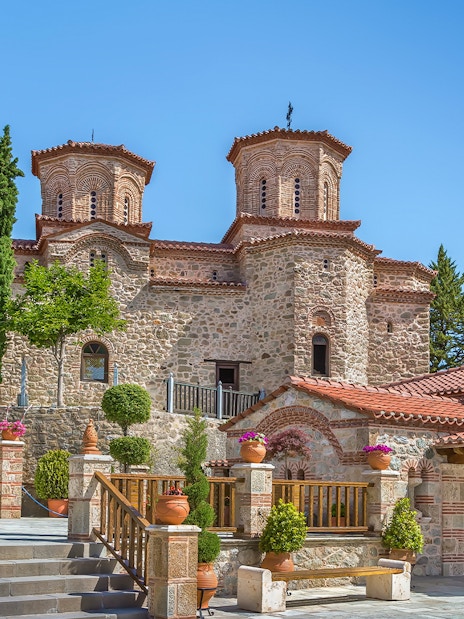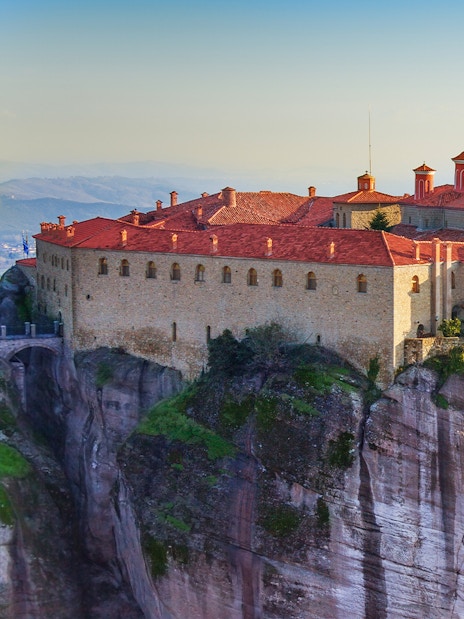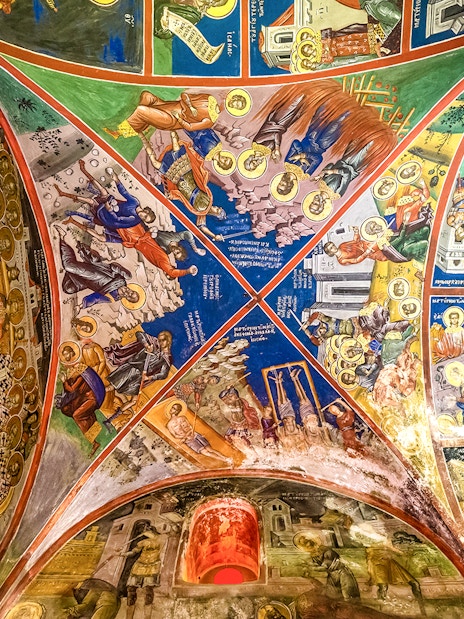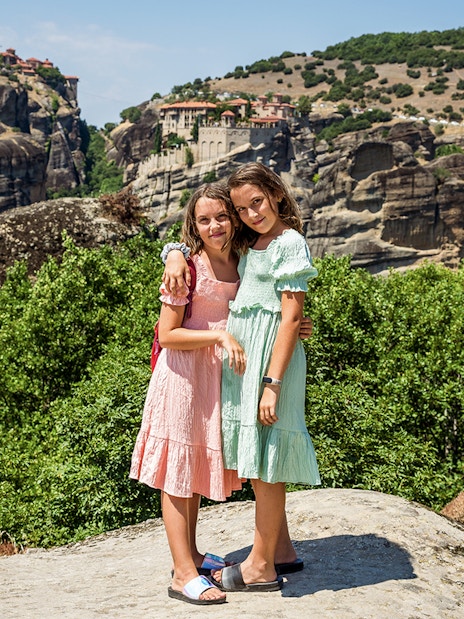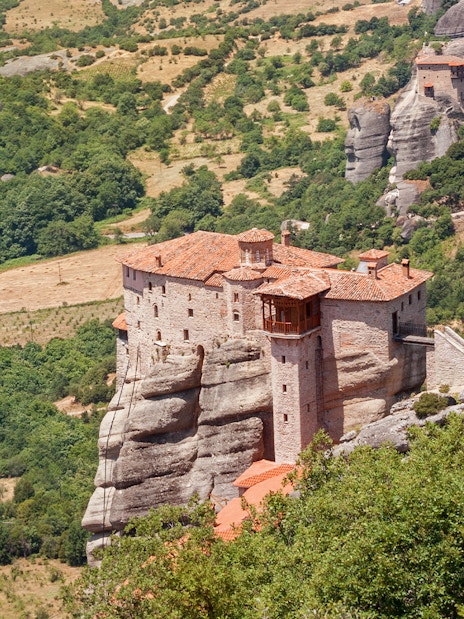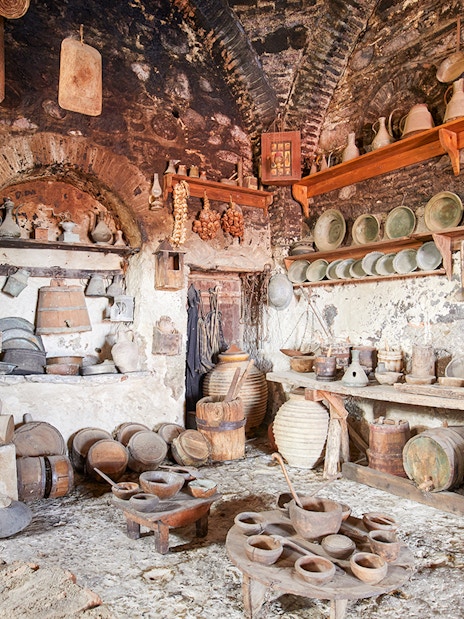Your guide to visiting Meteora
When to visit
Spring (March to May) is perfect for exploring Meteora, with mild temperatures and colorful wildflowers along the trails. Autumn (September to early November) is also ideal, offering cool weather, smaller crowds, and vibrant fall foliage across the cliffs and valleys.
Accessibility
Most monasteries have stairs, uneven paths, and narrow walkways, which can be challenging for those with mobility issues. St. Stephen’s Monastery is the most accessible, featuring a paved path and minimal steps.
Visitor guidelines
- Meteora is still an active religious site, so dress modestly. Women should wear skirts that cover the knees and tops that cover the shoulders, while men should wear long trousers.
- You cannot take photos inside, but outdoor photography of the cliffs and valleys is allowed.
Essential items to bring
- Most monasteries request a small cash offering (€3 to €5 per site), so bring small bills.
- Wear sturdy, closed-toe shoes for climbing stairs and walking on uneven surfaces.
Tips for the best experience
Don’t limit yourself to the main monasteries like Great Meteoron and Varlaam. Smaller monasteries, such as St. Nicholas Anapausas and Rousanou, provide equally stunning views, a more peaceful atmosphere, and unique photo opportunities away from the crowds.












